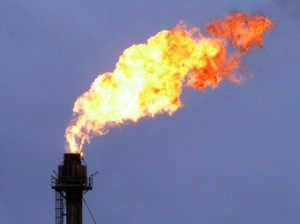 Natural gas hit a fresh 6-1/2-month high as weather forecasts continued to call for bitter cold temperatures and heavy snows and ice across much of US, increasing demand for natural gas. Thursday’s EIA report for the week ended November 29th showed a record November withdrawal in US gas inventories, which continued to support the market.
Natural gas hit a fresh 6-1/2-month high as weather forecasts continued to call for bitter cold temperatures and heavy snows and ice across much of US, increasing demand for natural gas. Thursday’s EIA report for the week ended November 29th showed a record November withdrawal in US gas inventories, which continued to support the market.
On the New York Mercantile Exchange, natural gas for delivery in December rose by 0.82% to $4.267 per mBtu by 12:35 GMT, the strongest level since May 28th. Day’s low stood at $4.229 per mBtu. Natural gas added 4.2% last week, after gaining 8.3% in the previous two 5-day-periods. This week prices have surged by 3.4% until now.
NatGasWeather.com forecast a winter storm to track across the US over the next 7 to 10 days, as numerous weather systems mix together. Each system will tap into a fresh dose of cold Canadian air, keeping much of the northern US with below normal temperatures, leading to continued high natural gas demand. The latest blast of freezing cold temperatures will be pushing into the South, with bitter cold temperatures reaching as far as Texas. Further to the north, another round of snow and ice will hit the Ohio Valley and Northeast with chilly rains toward the Southeast. The Arctic grip already began to loosen across the West and South tonight through Thursday.
The Northeast and Midwest will remain in the cold air through around the 16th, when much of the south-central US warms to near or above normal. However, the high heating demand states of the Midwest and Northeast will only see a brief and moderate warming on the 17th-18th before going right back in the freezer around the 20th-21st.
NatGasWeather.com’s extended forecast for the week ending December 23rd called for a transition period for the US, as high pressure formation over the southern and central parts of the country will prevent any additional Arctic blasts to develop further than Southern Canada. Parts of the Midwest and Northeast will still experience chilly conditions, while the south will warm considerably. New cold blasts may probably return on US territory after December 20th, especially across the Midwest and Northeast, which will hold until at least the 25th.
According to AccuWeather.com, the low in Chicago on December 15th will be 6 degrees Fahrenheit, or 17 degrees beneath average. The low in Columbus on December 15th will be 14 degrees Fahrenheit, below the average of 27 degrees, while readings in Boston will be 17 degrees Fahrenheit, 11 degrees beneath normal.
When cold weather is expected, natural gas surges as increased electricity demand to power air-conditioning calls for more supply of the fuel, which is used for a quarter of U.S. electricity generation. Above-average readings in the winter season have the opposite effect. Consumption usually picks up from November through March. According to the Energy Information Administration, power generation accounts for 32% of U.S. gas demand and 49% of U.S. households use the energy source for heating.
The Energy Information Administration reported on Thursday a larger-than-projected withdrawal in US inventories in the week ended November 29th, signaling robust demand. Stockpiles fell by 162 billion cubic feet, a much larger decline than the projected withdrawal of 146 billion cubic feet, according to the median estimate of 21 analysts surveyed by Bloomberg. Last week’s drop was above the 5-year average decrease of 41 billion cubic.
Total gas held in U.S. underground storage hubs equaled 3.614 trillion cubic feet and were 5.2% below last year’s amount of 3.814 trillion, and 2.8% less than the five-year average.
Teri Viswanath, director of commodities strategy at BNP Paribas SA in New York said after the EIA data release, cited by Bloomberg: “The records show that we’ve had only three other occasions in November where we’ve witnessed withdrawals of 100 billion cubic feet or greater, investors are going to be reluctant to short the gas market in the face of such constructive fundamentals.”
Early projections for next week’s storage data range between a draw of 75 billion cubic feet and 86 billion cubic feet, compared to a withdrawal of 8 billion cubic feet a year ago. The 5-year average change for the week is a 76 billion cubic feet decline.




